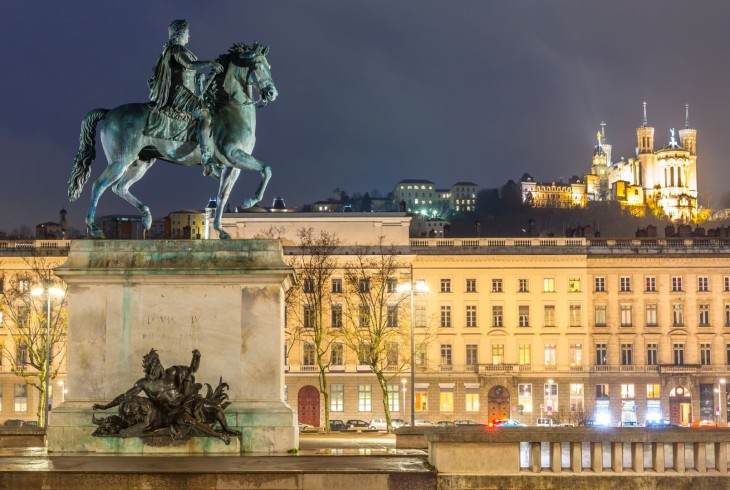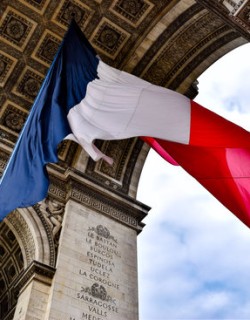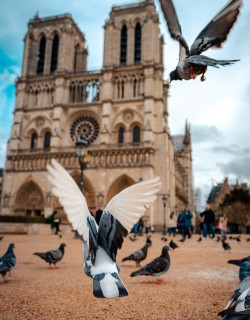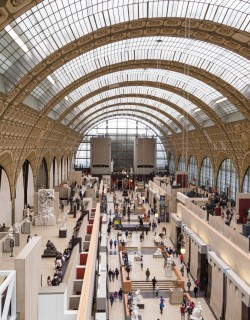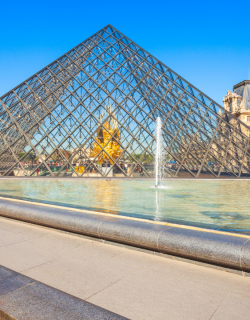Explore easily accessible out-of-town wonders, all while having both morning-time café crème and a late evening glass of Beaujolais wine in Paris.
Lyon
When it comes to things to see and do, Paris really packs a punch. You could come back a dozen times and still leave feeling as though you’d just scratched the surface. Though you might feel like you’re cheating on her by going out of town, Paris won’t mind at all if you venture out beyond the Périphérique – the capital’s multi-lane ring road – to meander further afield for a provincial pause. And the City of Lights will still be there for you to embrace when you return to her that same evening.
Each of the places we’ve selected can certainly be reached by car, if you prefer the freedom of renting a vehicle and getting around on your own. For many of the places on our list, there are shuttle bus optionsas well. But we’ve made a specific point of identifying spots that are also well connected by France’s excellent and affordable network of trains.
Today’s jaunt takes us to France’s second city. Once the most important city in the ancient Western Empire outside of Rome itself, Lyon remains a thriving metropolis and the undisputed gastronomic capital of the Hexagon. There is so much to talk about in Lyon that we’ll be covering it in three installments. Our last dispatch from Lyon, the first in this series of three, we presented a bit of the city’s history, then we pounded the pavement from the slopes of la Croix-Rousse – the old silk-workers’ neighborhood – to the heart of the Presqu’île (the peninsula formed by the confluence of the two rivers) and its grand places and elegant boulevards. Today’s adventure in the Ancient Roman Capital of the Three Gauls will bring us from the expansive Place Bellecour – the largest fully pedestrianized square in all Europe – and across the Sâone River to the cobblestone streets and hidden passages of le Vieux Lyon, Europe’s best preserved Renaissance quarter, then finally up to the inspiring basilica of Notre-Dame de Fourvière, perched high on the hill overlooking the whole of the city. The third and final bulletin will be dedicated solely to the culinary delights available in Lyon, recognized as the gastronomical capital of France.
All aboard!
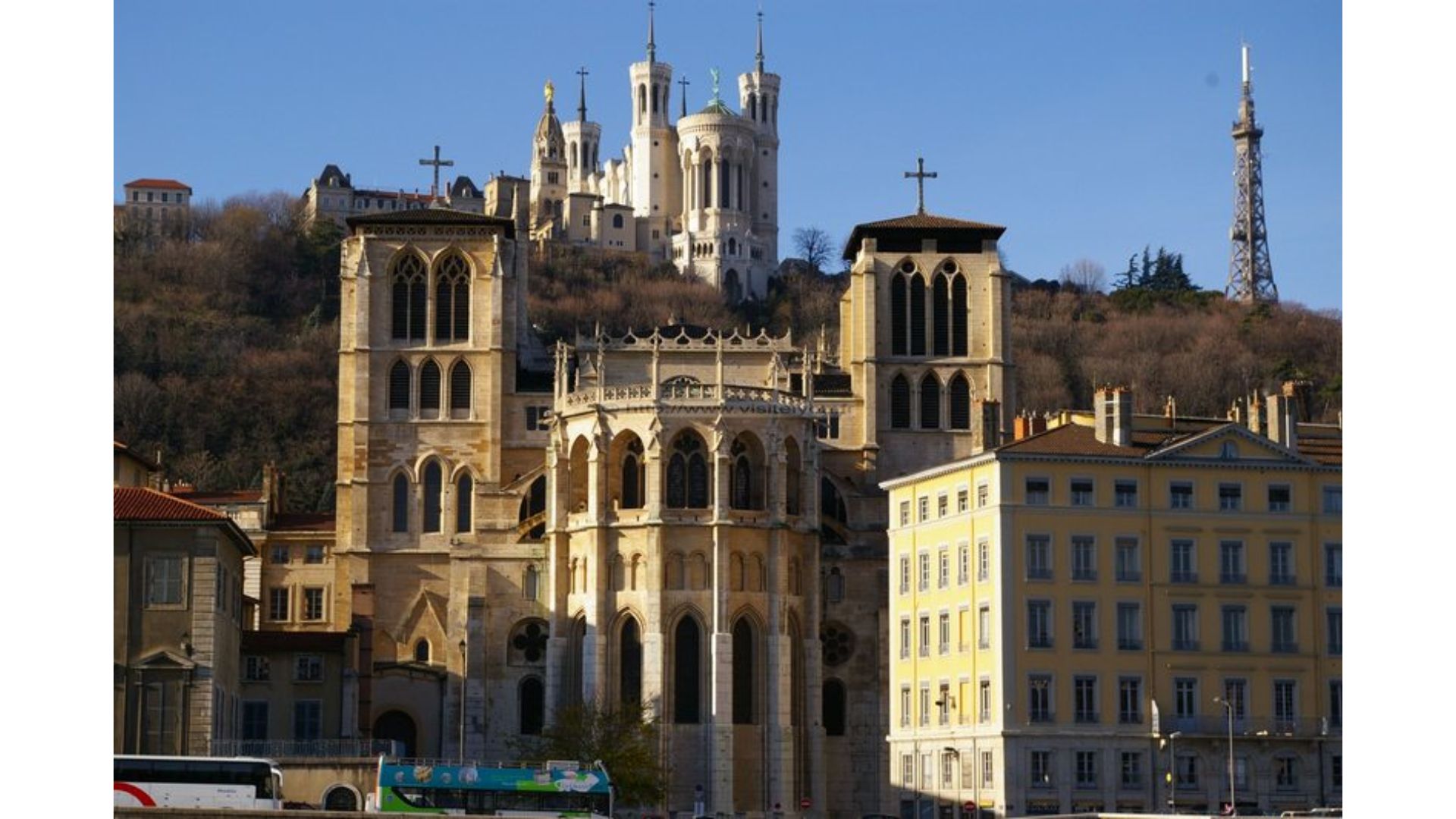
The first episode of our excursion to Lyon left us lingering over coffee in the opulence of the Second-Empire-style Grand Café des Négociants. Now we’ll continue down the lovely Rue du Président Édouard Herriot to the sophisticated Place des Jacobins. Property prices here are the highest per square meter in the city, and the reasons are immediately evident. The soft pastel palate of the architecture, the graceful arc of the place and the perfectly proportioned dimensions of the fountain in the center of the square (featuring four luminaries of Lyon’s past) complement the mannered air of urban elegance of Lyon’s upper bourgeoisie, famed throughout France for their discreet sense of style.
Just around the corner is Lyon’s chapter of the legendary Second Empire department store, Printemps. On a hot summer day or a drizzly winter afternoon, a saunter through the myriad aisles on several floors of this magnificent period building is a wonderful way to shelter from the elements, while admiring the latest fashions for those of unimpeachable taste.
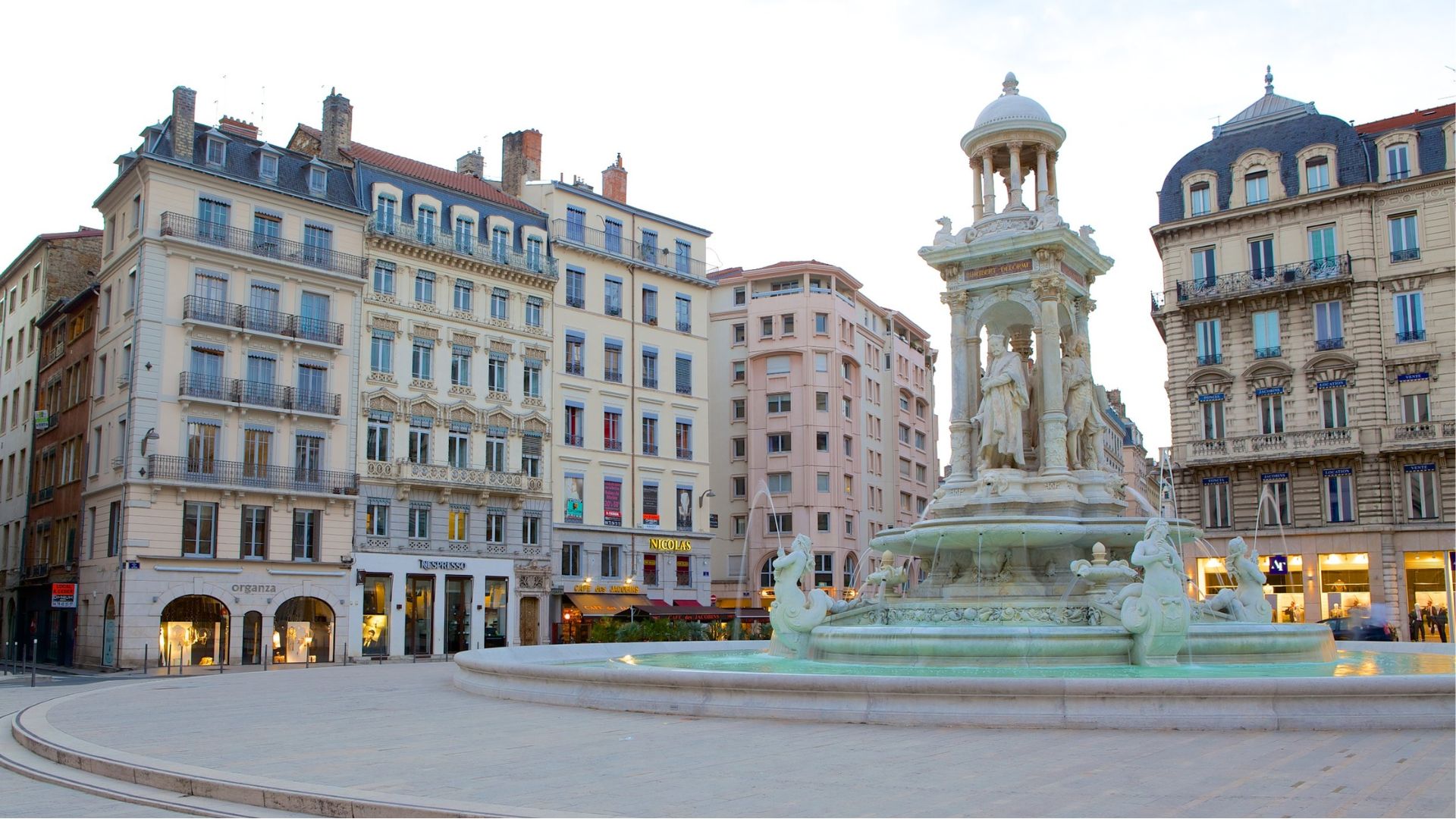
Our next stop is the yawning expanse of Place Bellecour, Europe’s largest fully pedestrianized square. Already in the early 1600s, as Lyon’s wealth and population were rapidly growing, King Henry IV attempted to wrest this parcel of land from the hands of the archbishop, to no avail. The never-ending dispute languished in the courts until a century later, when Louis XIV finally obtained possession of it. The king tasked Robert de Cotte, his chief architect in the later years of his reign, with designing stately buildings to frame the grand square. When a noble equestrian statue was erected in the center of the square, the effect – and the impression of royal power – was complete.
Today there is a small playground for children and a Ferris wheel year round, and teenagers still gather round benches and sit to socialize on the steps of the central statue’s pedestal. It is the city’s most iconic place to arrange to meet, then go on to somewhere else: “Salut (kiss, kiss). Where shall we go for a drink?” This is Lyon’s Kilometer Zero, the point from which all distances are measured.
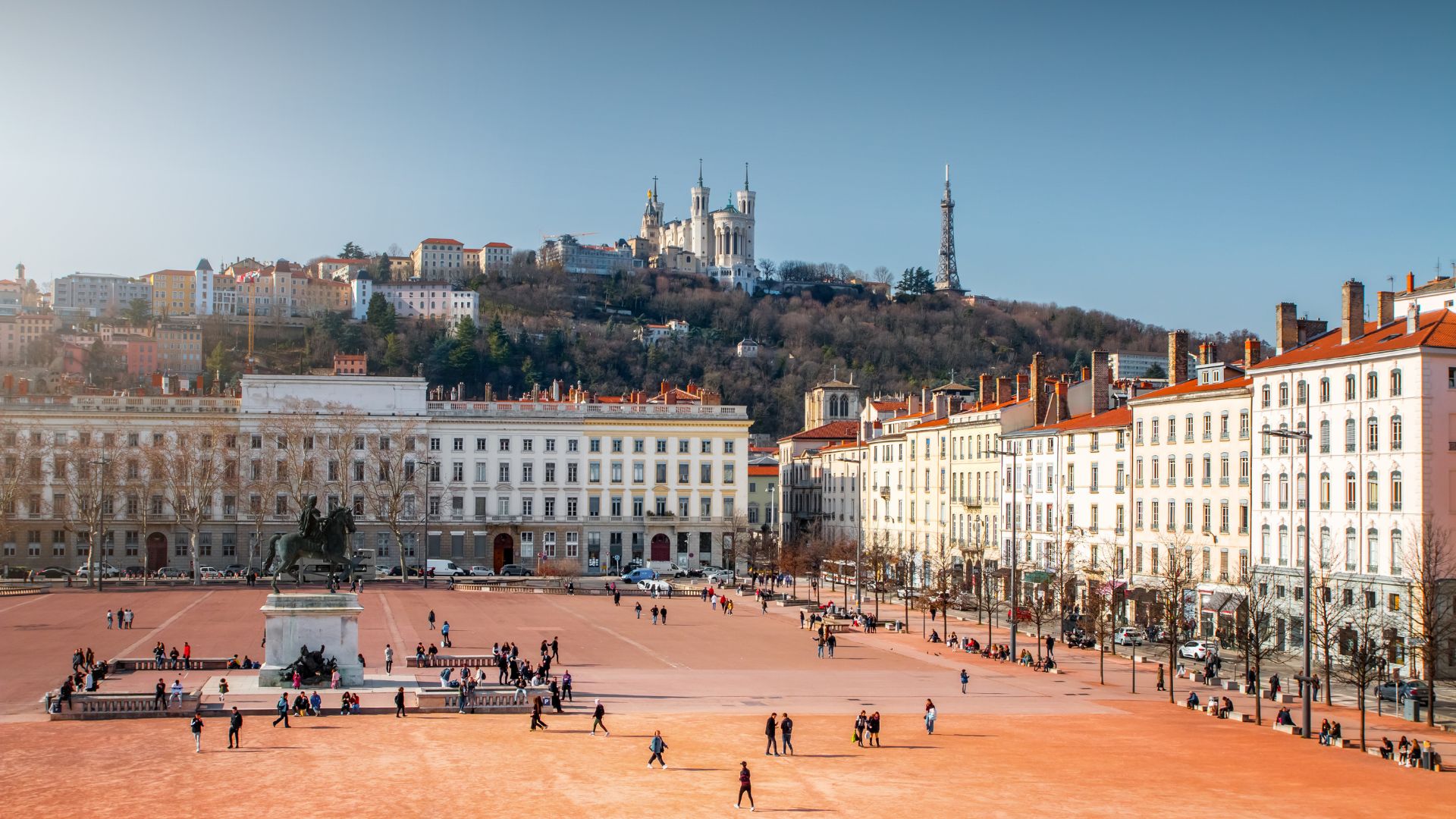
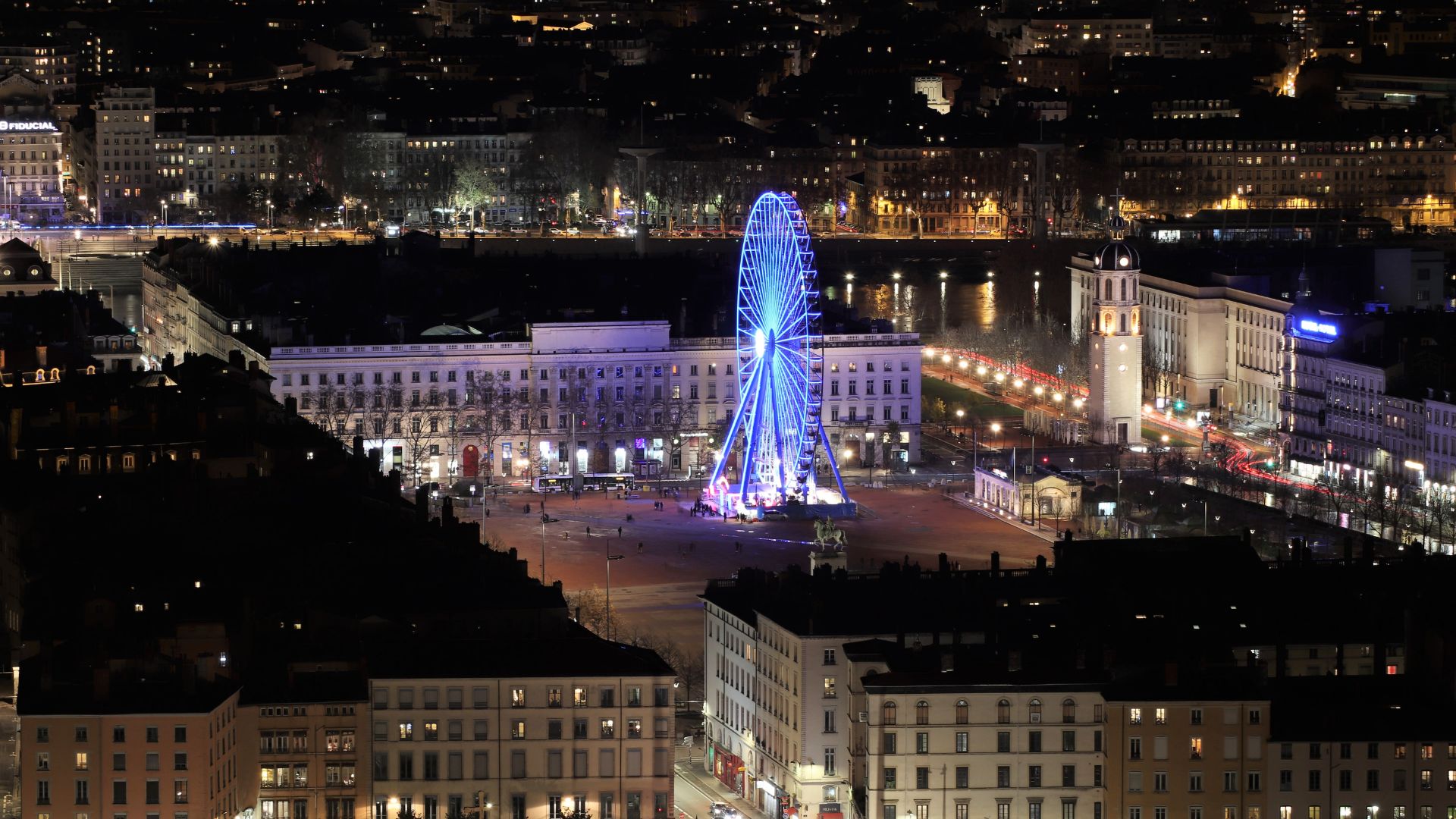
Leaving from the south end of Place Bellecour we embark on a journey, going back 1000 years in just a few blocks to the abbey church of Saint-Martin d’Ainay. Legend has it that a church was founded here as early as the 5th century, replaced by a larger and grander structure in Carolingian times, when the adjacent monastery counted some 20 monks. When it was elevated to the rank of abbey at the end of the 11th century, work began on a glorious new building in the Romanesque style, and in 1107, Pope Pascal II stopped in to consecrate the altar and dedicate the new church to Saint Martin of Tours. There is nothing left of the extensive abbey complex but the church itself. Though it was (happily) saved from ruin in the 19th century and (somewhat less happily) redecorated, you can still feel the Medieval mood of the place, especially in the Gothic chapel of Saint Michael and the much earlier pre-Romanesque chapel of Saint Blandine. A visit here is a poignant reminder of the persistence of the human spirit across the ages.
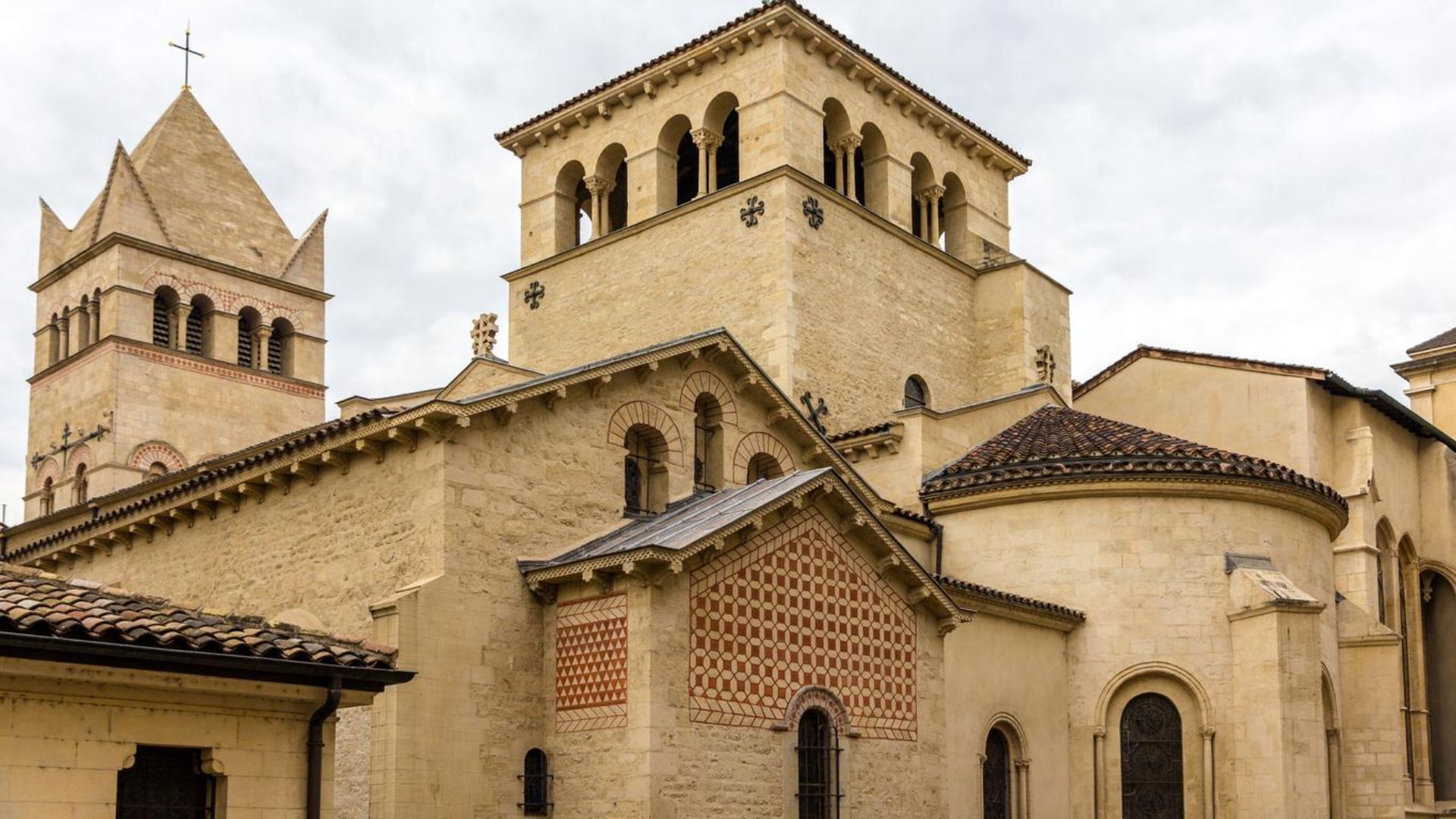
A quick hop to the Saône and a short stroll north along the banks brings us to the Passarelle Saint-Georges, a red cabled suspension bridge. This will carry us to the rive-droîte (right bank) and the heart of Medieval and Renaissance Lyon, where we are welcomed by the church dedicated to the saint whose name the bridge bears. It is an appealing Neo-Gothic construction, replacing a much earlier structure. Here we are embraced by the slopes of Fourvière Hill to the west and the river to the east, in a narrow tongue of land that became home to Lyon’s population following the collapse of the Western Roman Empire. This is the area known simply as le Vieux Lyon, or Old Lyon. Losing ourselves in aimless meanderings along the cobblestone streets is a treat for the senses.

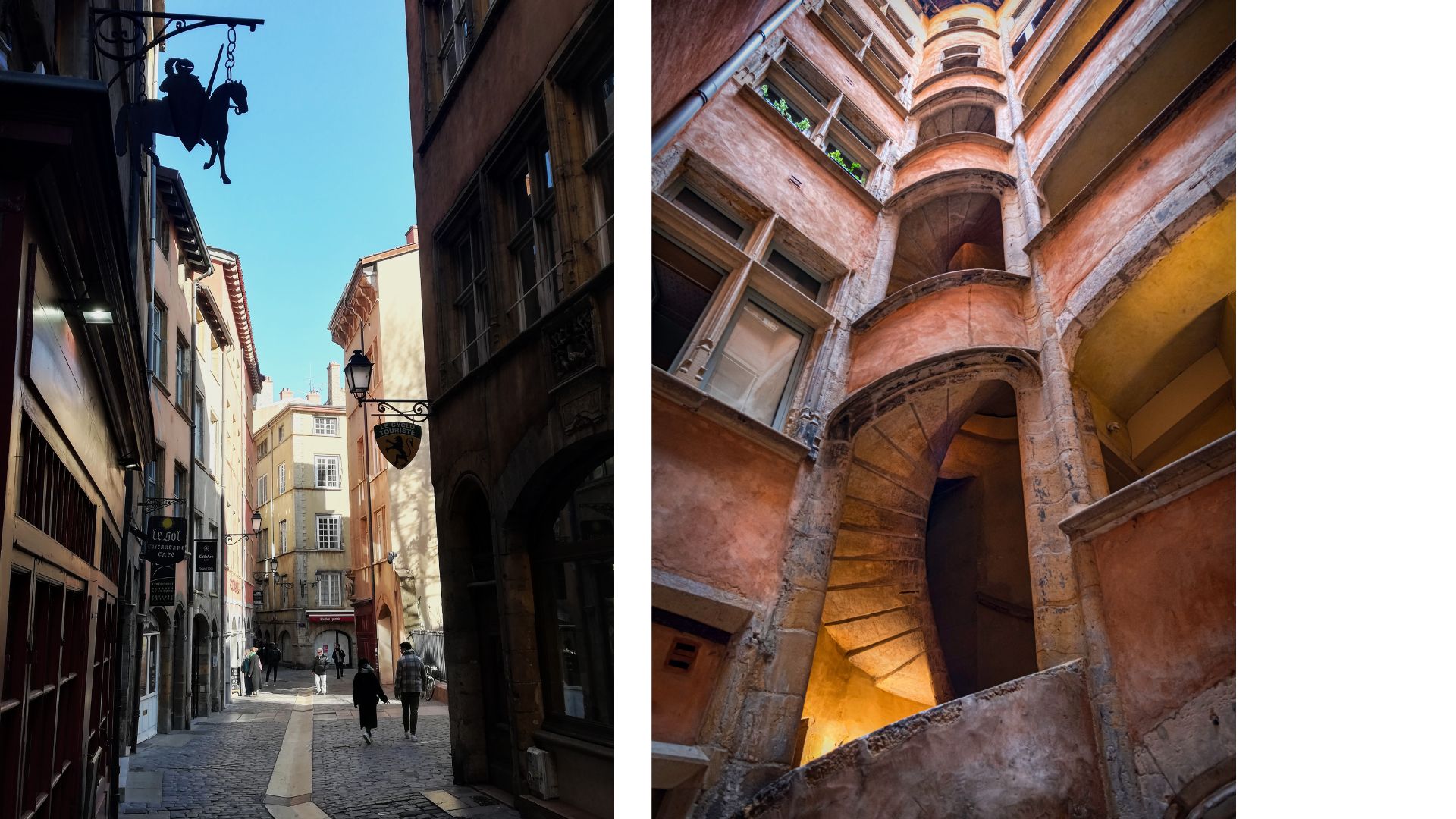
The entire quarter is criss-crossed by traboules, more than 500 galleries that connect streets right through buildings, many opening up partway through into one or more tiny courtyards. Silence is key as you walk through (transambulare in Latin), as you are traversing narrow passageways that run alongside people’s homes. Little is known about the early history of the traboules, which may have existed in Lyon as early as the 4th century. Whether created for easy access to shared water sources or later, when the silk industry was such an important part of the city’s economy, as a convenient way of transporting silks and supplies from points of provision, production, and distribution, taking a little time to trabouler (the Lyonnais use it as a verb!) will be one of the most memorable experiences of your entire vacation.
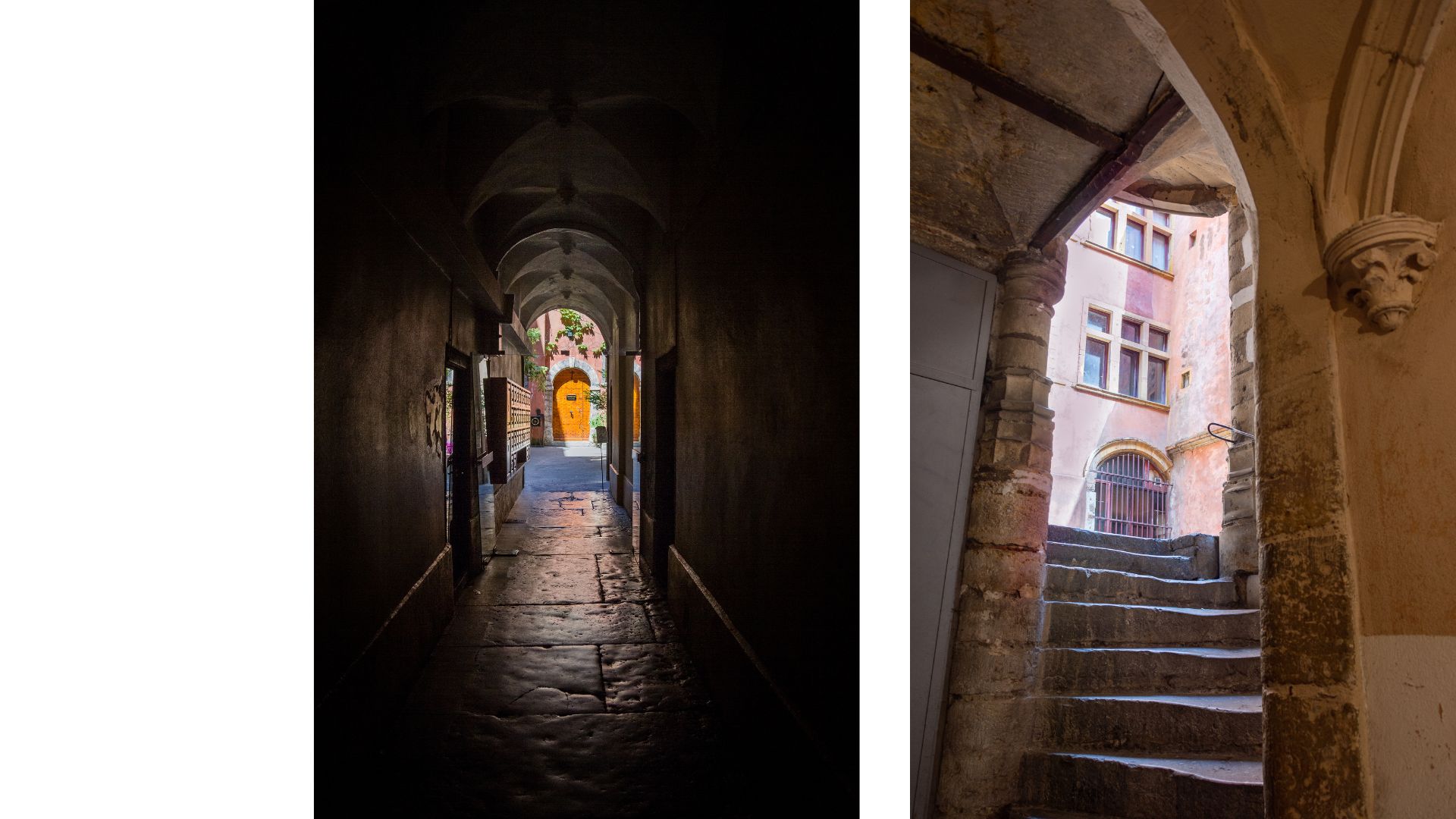
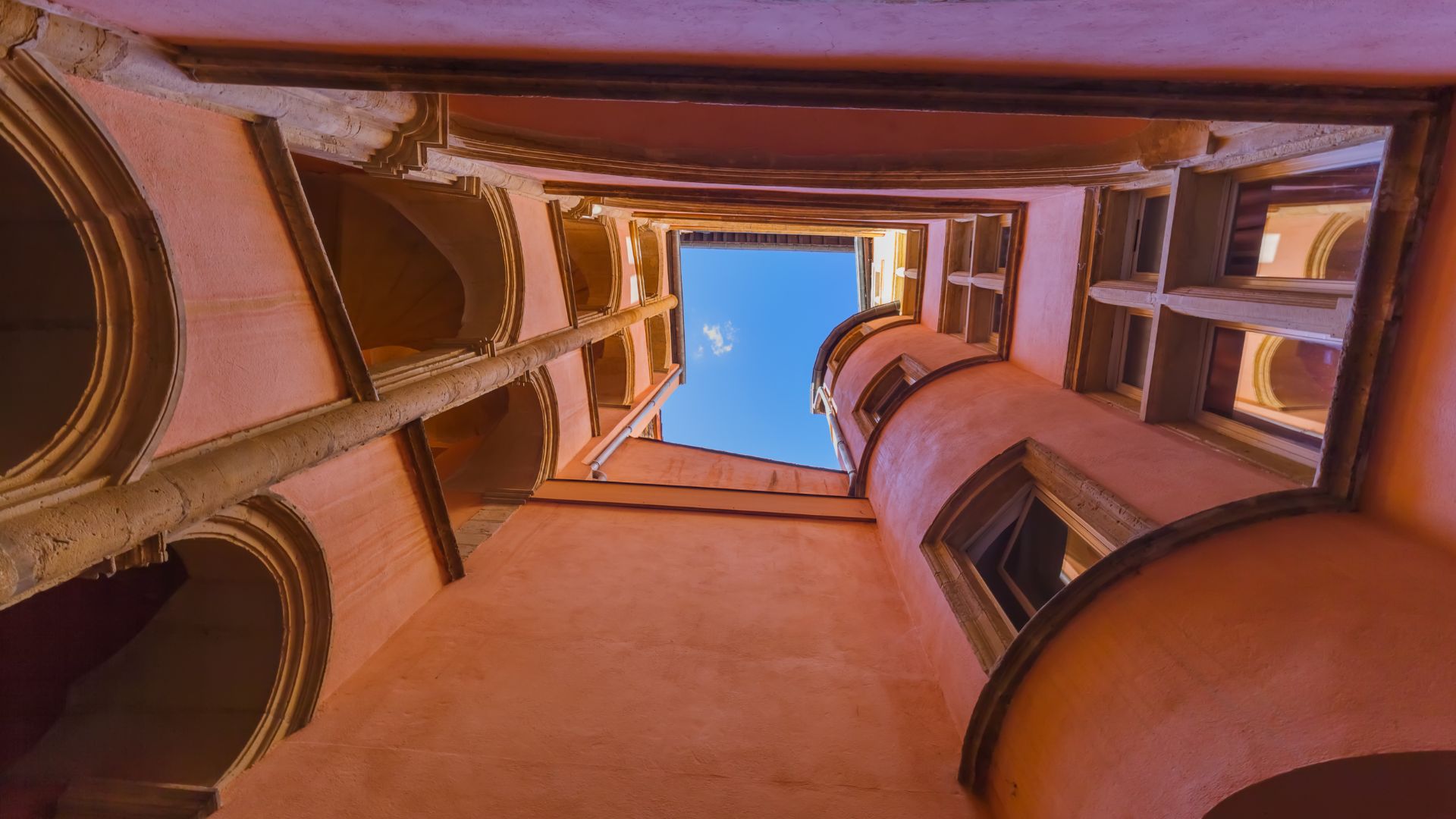
Just a stone’s throw away is the beating heart of le Vieux Lyon, the Cathedral of Saint-Jean, dedicated to Saint John the Baptist. Lyon has had a bishop since the 2nd century, making it the oldest episcopacy in France. The horrendous martyrdom of 48 Christians in the year 177 left an indelible mark, thanks in no small measure to the deeply moving writings of Irenaeus of Lyon, considered one of the great Fathers of the Church. In the aftermath of the massacre, Irenaeus rallied the traumatized Christian community, inspiring them to keep the faith and march on in courage and strength. The memory of those early martyrs is kept sacred by the cathedral’s formal dedication to both Saint John the Baptist, who was famously beheaded, and Saint Stephen, considered the first Christian martyr. The current structure was begun in 1175, marking the transition from Romanesque to Gothic, and the measured reserve of the façade is matched by the simple austerity of most of the interior. The effect, though, is eminently uplifting. There is grace and warmth in the cathedral’s simplicity, a haven of peace and tranquility in the bustle of the old city streets teeming with residents and travelers alike.
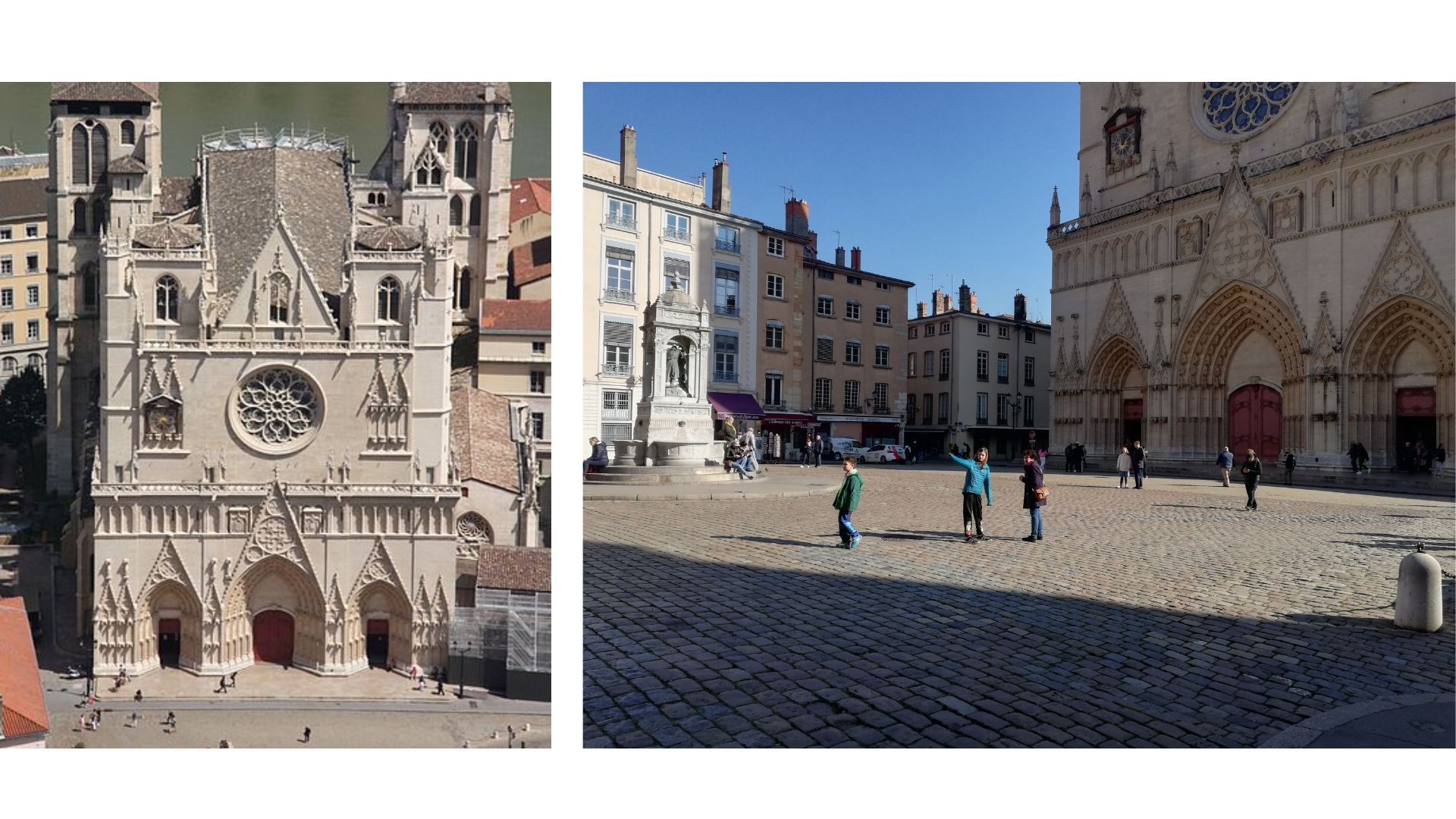
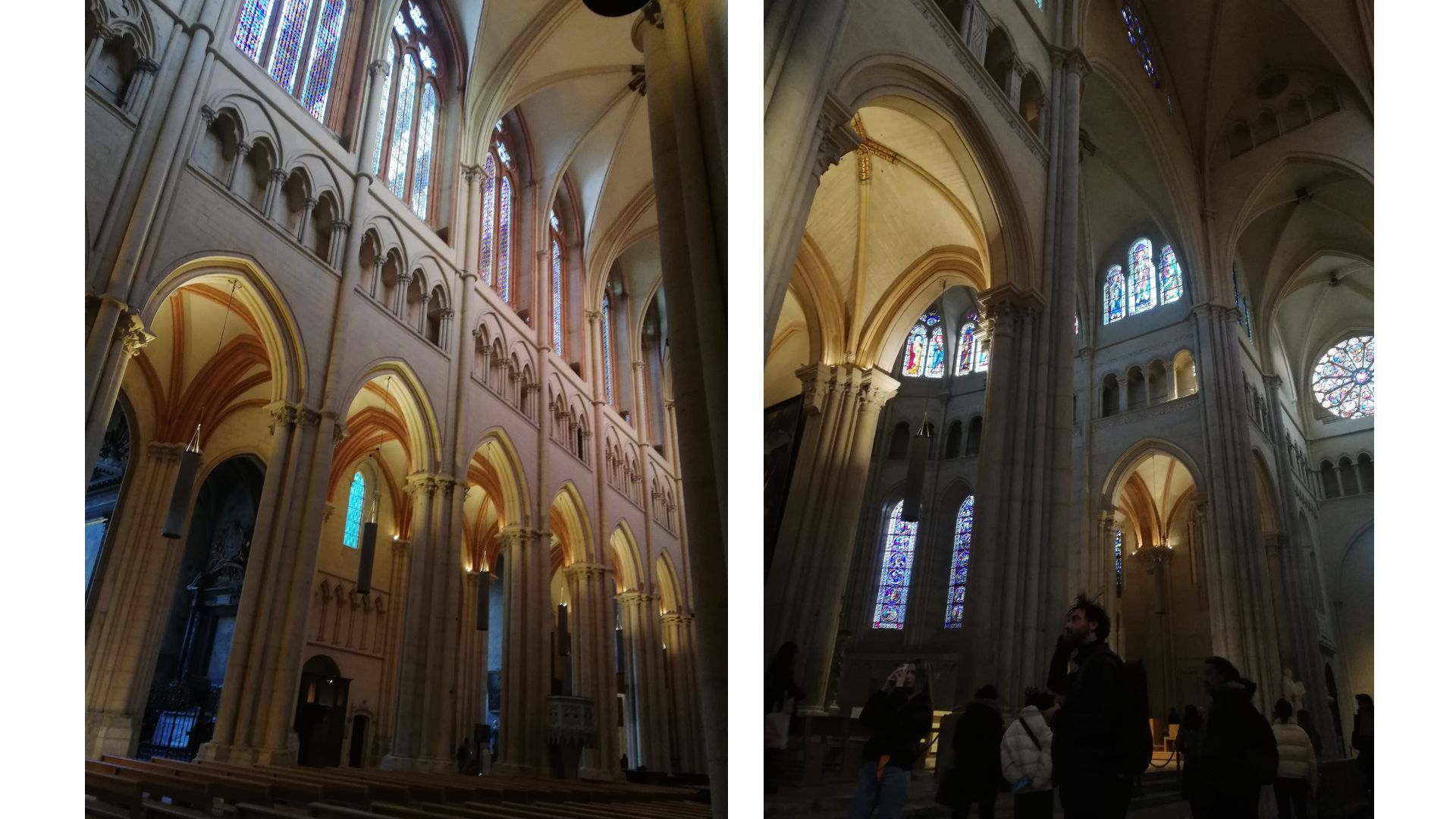
Just south of the cathedral is the funicular that will take us to the top of the hill. Here on the defensible reaches of the hill was where the old Roman city was located. There are impressive vestiges of that, including a remarkably well-preserved theatre, which could accommodate 10,000 spectators. It is still used today for the summertime multicultural festival, Nuits de Fourvière, held at the ancient theater since 1946.
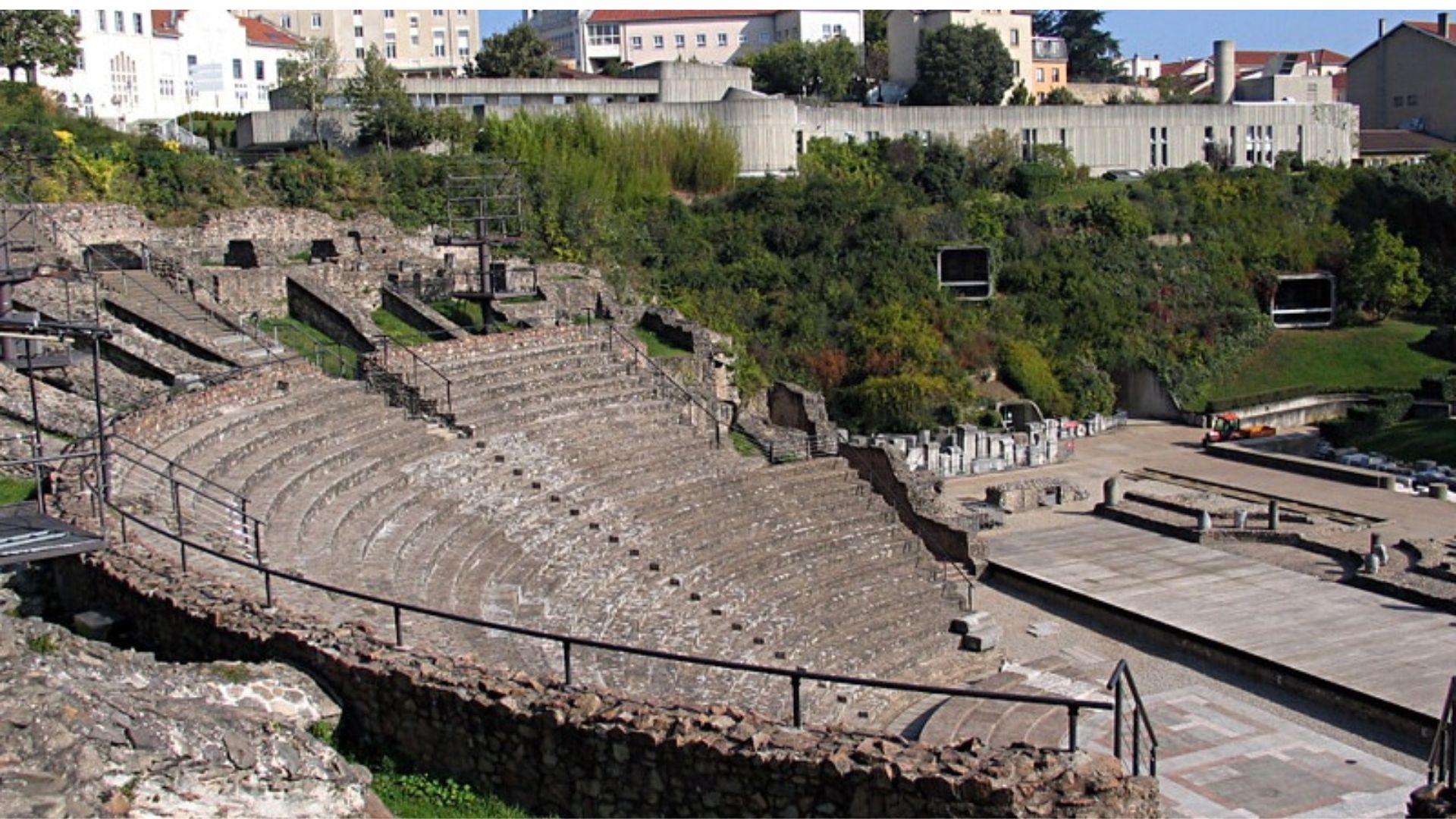
Nearby, the imposing Basilica of Notre-Dame de Fourvière sits perched high on her throne, with a commanding view of the entire city below. There has been a chapel here since the 12th century, originally dedicated to Saint Thomas-à-Becket, then subsequently to the Virgin as well. The site grew in importance and notoriety as a focal point for the honoring of Mary, and in the wake of the 1870 Franco-Prussian War, so many pilgrims were coming that a private committee was established to raise the funds to commission the improvement of the entire area. In the end, it was decided to construct an entirely new edifice. Its fundamentally Neo-Byzantine style and eclectic interior décor have earned it both avid admirers and outspoken critics.

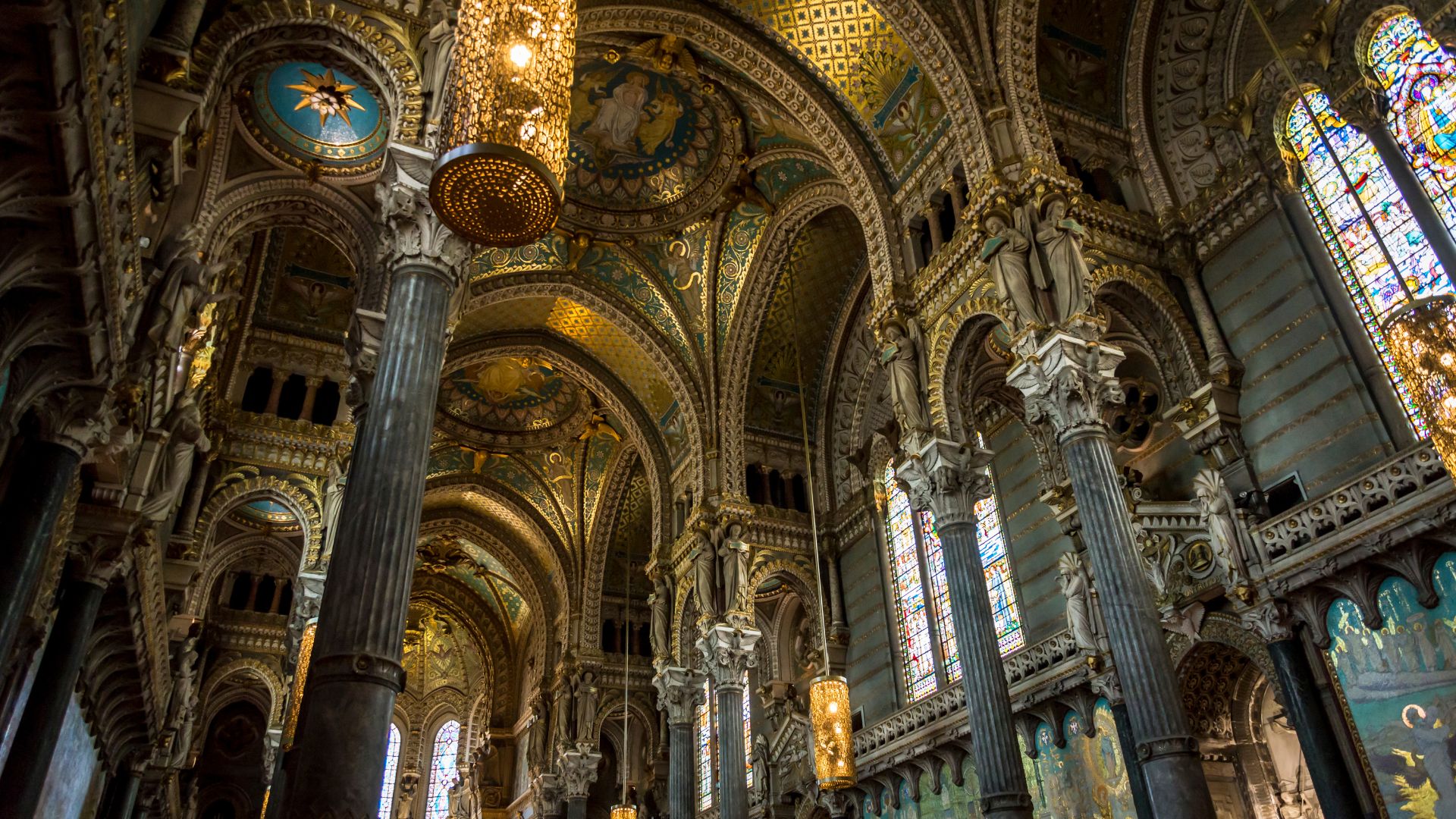
In any case, no visit to Lyon is complete without taking a moment to soak in the unabashed opulence of Notre-Dame de Fourvière and lingering at the rail in the adjacent garden to see the whole of the city splayed out at your feet. We stand at the site of the old Roman Forum (forum vetus, the likely origin of the name of the hill today), with the ancient theater just a few steps away. Immediately below are the banks of the Saône, where Lyon’s populace settled in the Middle Ages. Then the glory and the grandeur of the 17th and 18th-century Presqu’île, and to the left the colorful houses on the slopes of la Croix-Rousse. Beyond the peninsula and the Rhône are the steel and glass structures of the thriving modern city of Lyon. The funicular back down the hill connects with the metro, and a short quick ride brings us back to Part-Dieu station for our return to Paris, after a very full day of adventure and discovery in one of France’s most fascinating cities.
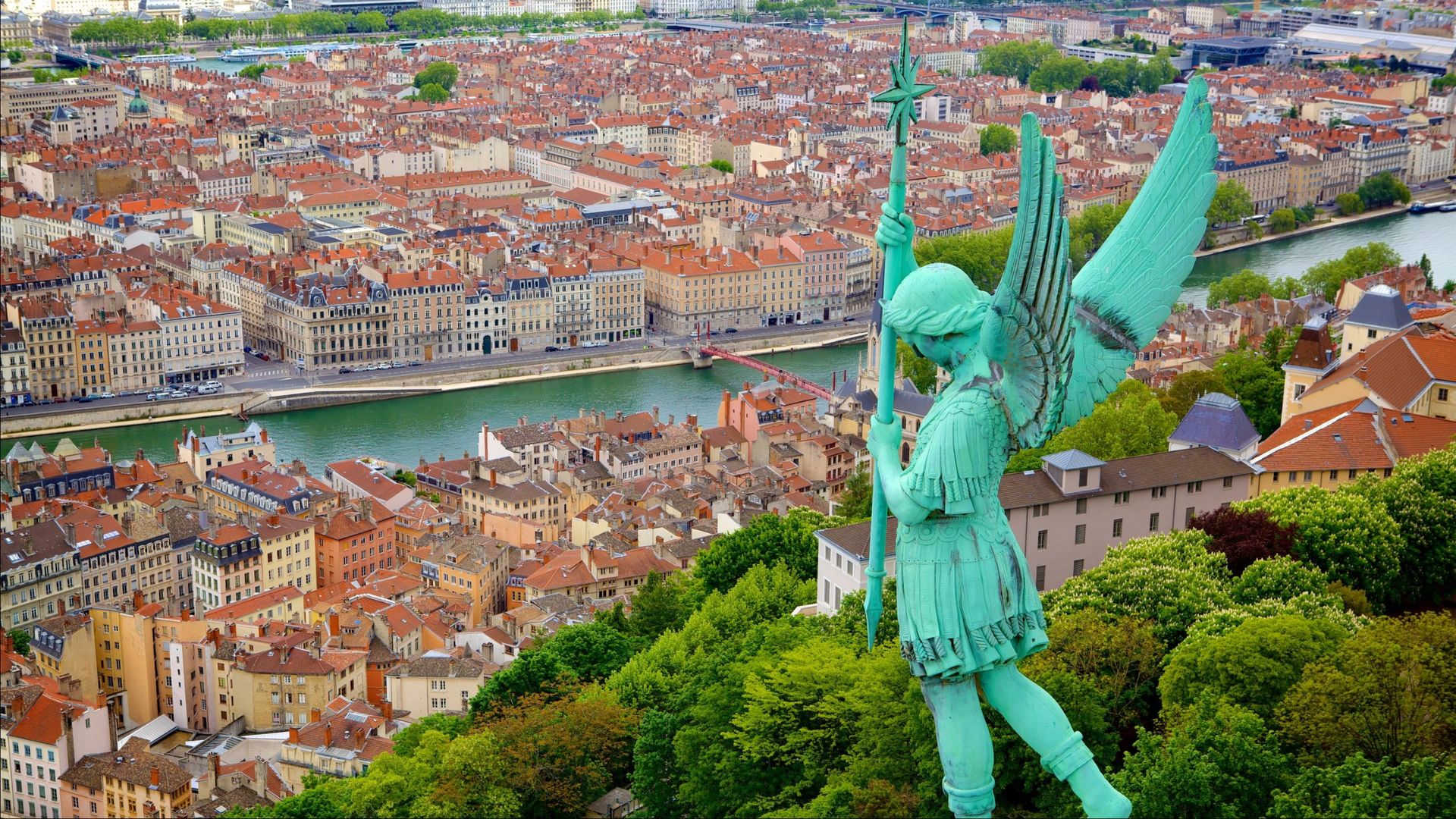
Be on the lookout for the third and final chapter of our visit to Lyon, which will be dedicated entirely to the food and the culinary tradition that has made Lyon the capital of French gastronomy. À bientôt!
Practical Information:
* Printemps department store: open daily 10:00 a.m. to 7:00 p.m. Friday and Saturday open until 7:30 p.m. Closed Sunday.
* Church of Saint-Martin d’Ainay: open daily 9:00 a.m. to 11:30 a.m., 2:30 p.m. to 6:30 p.m. Saturday 9:30 a.m. to 11:45 a.m. Sunday 9:00 a.m. to 12:30 p.m.
* Saint-Jean Cathedral: open daily 8:15 a.m. to 7:45 p.m. Saturday 8:15 a.m. to 7:00 p.m., Sunday 8:00 a.m. to 7:00 p.m.
* Basilica of Notre-Dame de Fourvière: open daily 7:00 a.m. to 8:00 p.m.
